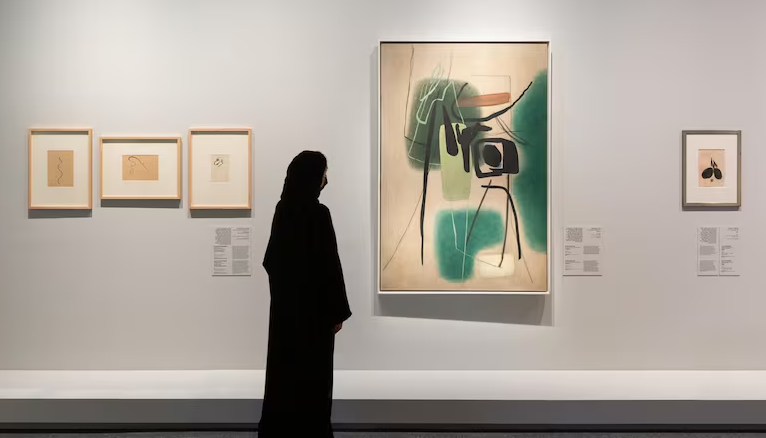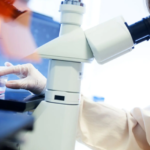Founded in 1976, the Dubai International Art Centre (DIAC) in Jumeirah has served as a nurturing space for generations of art lovers from different backgrounds. As one of the oldest art institutions in the UAE, it started as a non-profit organization and now has around 1,300 members.
Lebanese expat Beba Hamati first became involved with DIAC in 1986 when she moved to Dubai and began teaching art to young children. Now, four decades later, her six-year-old grandson attends pottery classes at DIAC.
For Hamati, the art centre has been a constant in her life, supporting her creativity and offering a social space to connect with others in the community.
“DIAC is for everyone. It represents the free spirit of artists, allowing us to pursue our passions while being part of a vibrant art community,” Hamati told.
As a multidisciplinary artist and sculptor, she teaches pottery at DIAC, uses its studios, and enjoys the various exhibitions held throughout the year. Her grandson, Theo Kassab, loves his pottery lessons. “I feel really happy when I make sculptures and vases,” said young Kassab.
A Place for Community Engagement
Indian artist Beena Samuel mentioned that without the art centre, she would not have had the chance to meet people from various nationalities. When she first arrived in Dubai in the 1990s, there were few places for creative individuals to gather.
“DIAC exposed me to many cultures and languages. I learned about local traditions from my Emirati students and even picked up some French because my favorite teacher was from France,” she recalled.
Three generations of Samuel’s family have been part of DIAC. She began taking watercolor classes in 1997, followed by her daughter-in-law taking silk painting lessons, and now her grandchild is enrolled in an art course.
Supporting Local Talent Since 1976
Located in a quiet street off Jumeirah Beach Road, DIAC operates from a two-storey villa that includes classrooms, studios, a café, and a garden. A wide variety of courses are offered by diverse teachers. While the centre is open to all, it has an annual membership fee of Dh450 for adults.
Since its start in May 1976, DIAC has become an artistic and cultural landmark, showcasing local talent and building connections within the art community. Originally called the Art Society of Dubai, it began in the garages of a few art lovers living in the city.
In 1979, a seaside villa on Jumeirah beach was donated by Oscar Mandody, the former deputy director of the Ruler’s Affairs Department. Donations from companies and art patrons covered rent and utilities. Early artists associated with the centre included Mary Jose, Bob McGregor, Caroline Jackson, Reta Annen, and Nargis Khalid.
In 1995, the name changed from the Art Society of Dubai to DIAC, and the centre moved to its current location in 2005.
“The spirit of the art centre has stayed the same over the years. From beginners to experienced artists, everyone is welcome at DIAC. We see entire families, including mothers, daughters, grandparents, and grandchildren, who have been part of the centre for decades,” said Diyali Sen Bhalla, chairperson of DIAC.
She added, “The UAE’s multicultural environment is reflected in the art centre, fostering a sense of friendship, acceptance, and openness among our students, teachers, and visitors.”
Encouraging Emirati Talent
Over the years, DIAC has supported both expats and Emirati artists. Notable Emirati artist Khawla Al Falasi started taking art lessons at the centre as a high school student in the 1980s. She credits DIAC and her teachers for helping her achieve her dream of becoming a successful artist.
“When I began my art journey, there were few Emirati women pursuing art. I focused on learning hyperrealism and trained with Alem Goshime from Ethiopia and Shakeel Siddiqui from Pakistan. I attended classes after school and on weekends, participating in exhibitions and winning prizes,” shared Al Falasi.
Other well-known Emirati artists linked to the centre include Abdul Qader Al Rais, Dr. Najat Makki, Khalil Abdul Wahid, and Faisal Abdulqader.
Every year, DIAC hosts a member’s exhibition, an annual student exhibition, and numerous workshops, craft fairs, and cultural trips. These events have helped many local artists launch their careers.
Australian expat Amanda Ovington shared how her life came full circle through support from her mentors at DIAC. Starting with sculpture classes in 2008, she has transitioned to teaching in 2024, using her 16 years of training and experience gained at the centre.
A Supportive Artistic Community
Ovington expressed, “We are like one big family of artists, always inspiring and encouraging one another. A memorable moment for me was winning the members’ competition at DIAC a few years ago.”
The art centre has faced challenges but continues to thrive, providing a space for many art lovers in the city to explore their creativity and connect with others.





